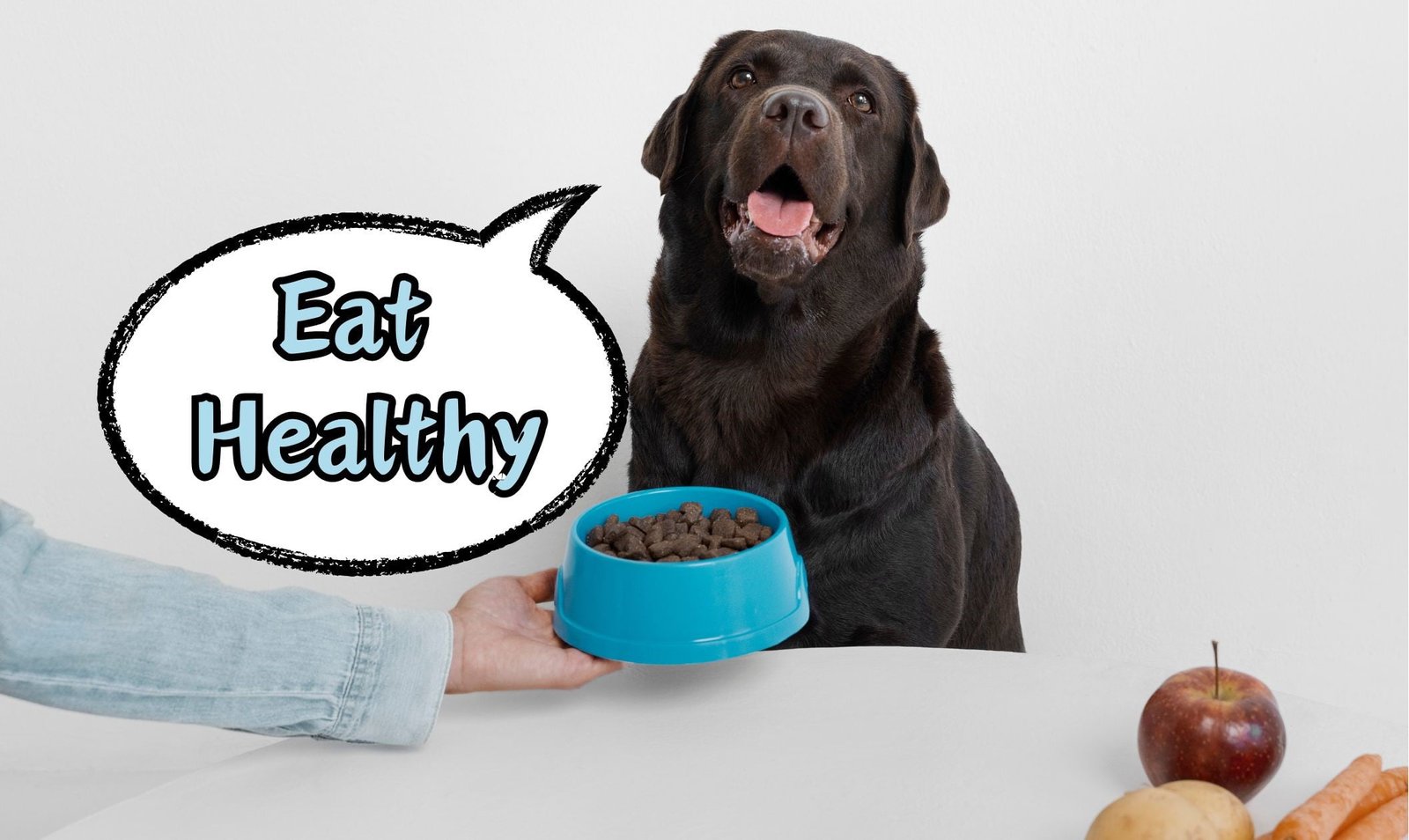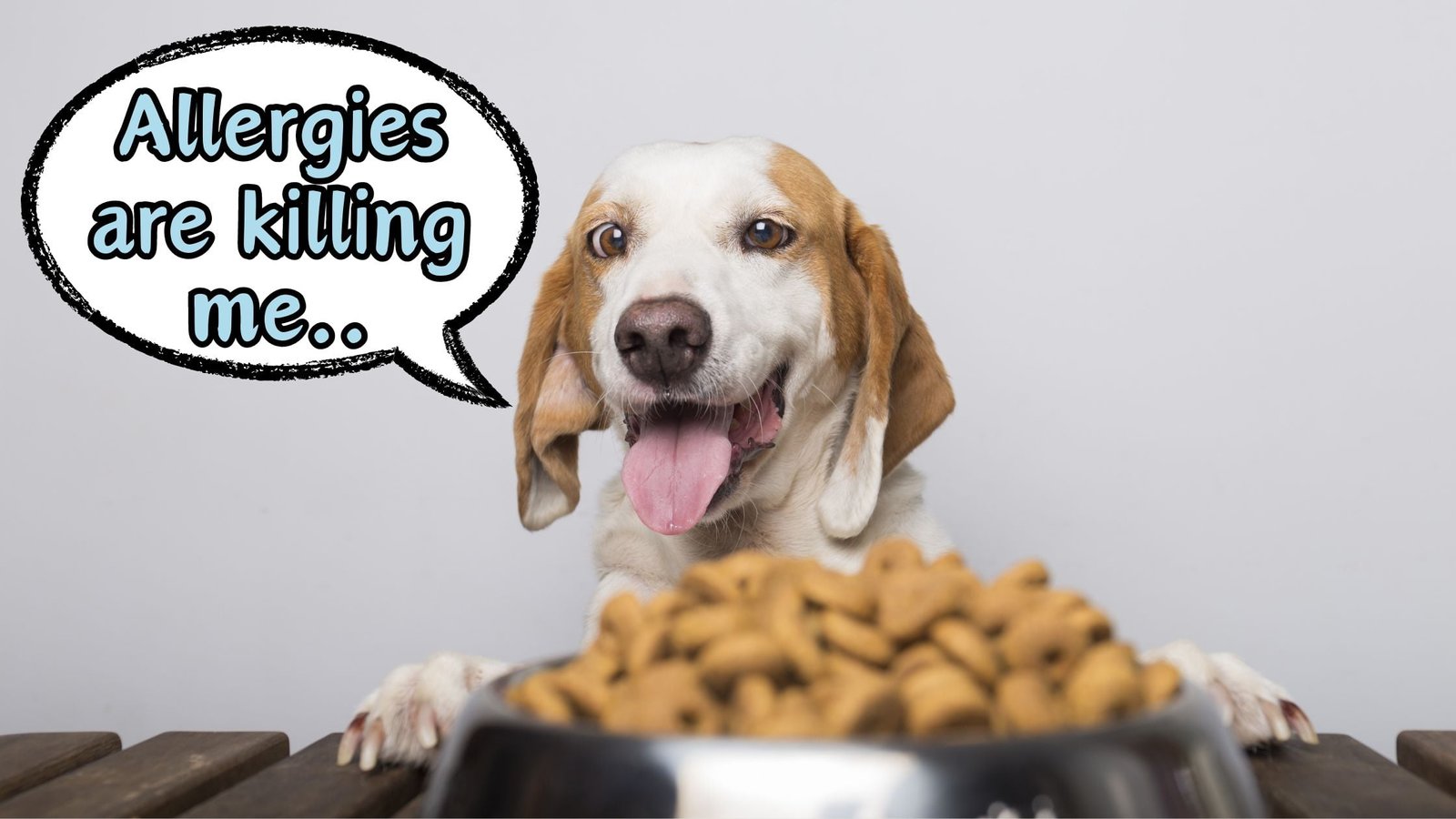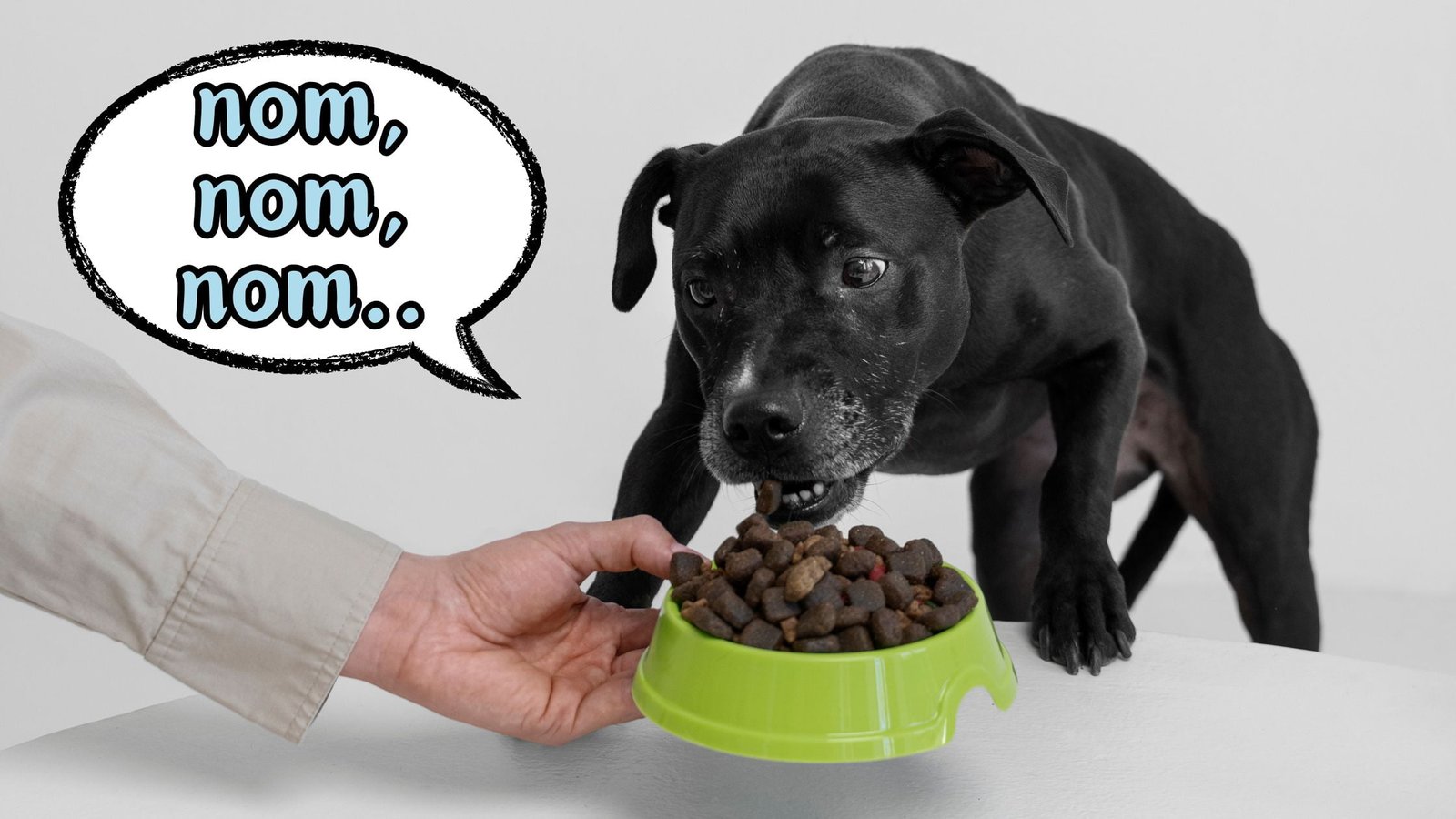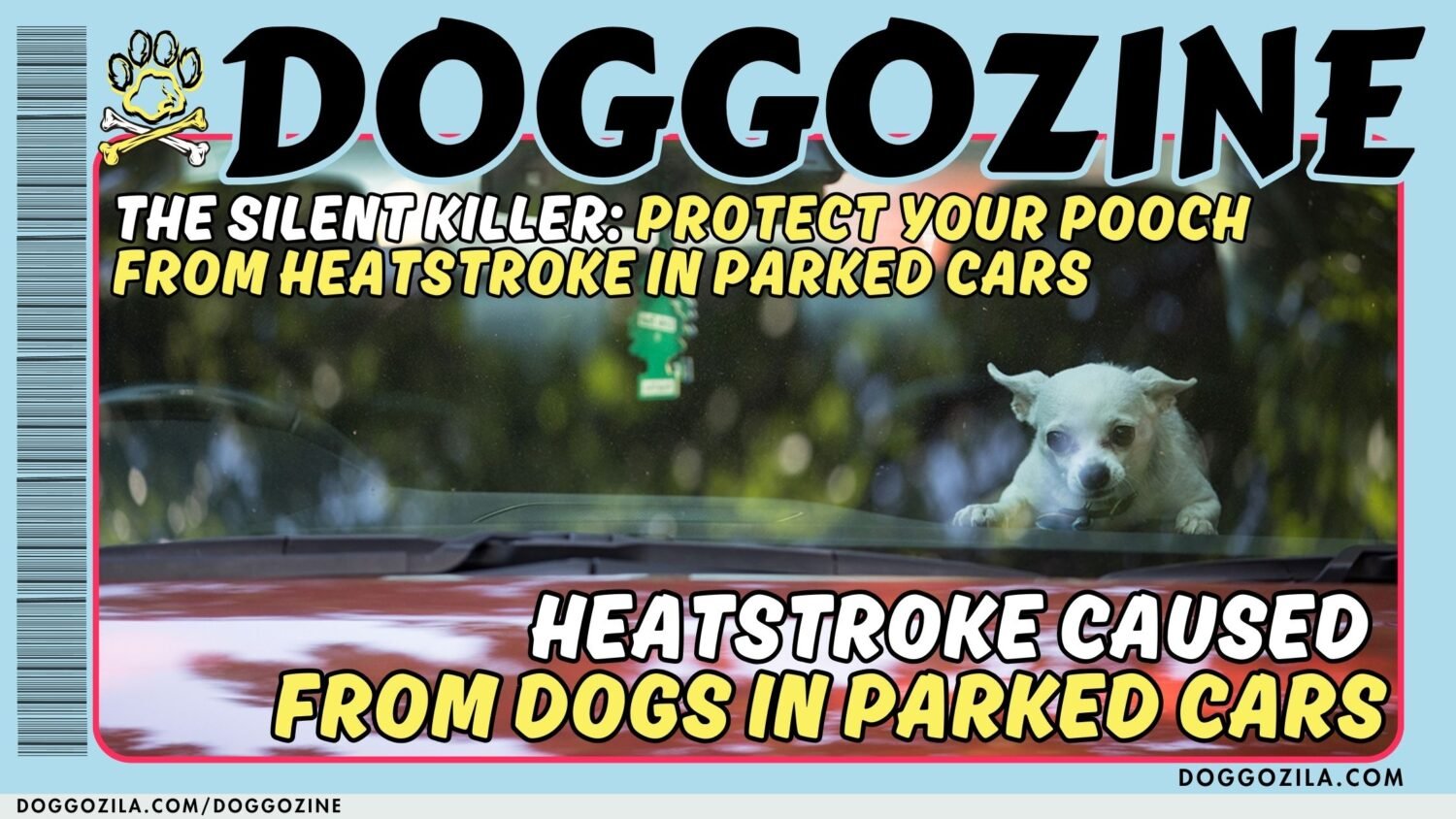Dogs can get uncomfortable from food allergies. Their bodies react badly to certain foods. This makes them sick. Just like people, dogs can get allergies from foods. The symptoms can be mild or serious. Here, we learn about why dogs get food allergies. We focus on how proteins in dog food cause problems.

WHAT CAUSES FOOD ALLERGIES IN DOGS?
In this article, we will explore the causes of food allergies in dogs,
with a particular focus on the role of proteins in commercial dog food.
Proteins trigger an allergic response in dogs
A dog’s immune system attacks proteins in their food. This causes an allergic reaction. Any protein can trigger this. But certain proteins often cause allergies. These proteins are in commercial dog foods. They come from vegetables and grains.
Not all dogs get allergies to these proteins. Each dog is different. Some dogs are fine with grains and veggies. Other dogs get allergies from their proteins.
The Role of Additives in Food Allergies
Besides proteins, additives in dry and wet dog food cause allergies too. These include preservatives, colors, flavors, and chemicals. While considered safe, some dogs react badly to them. This gives the dogs allergy symptoms.
It is important for dog owners to carefully read the ingredient labels of commercial dog food and be aware of any additives that their dog may be sensitive to. In some cases, switching to a dog food brand that uses fewer additives or opting for a natural or homemade diet may help alleviate food allergy symptoms.
The Role of Fresh Meat
Contrary to proteins found in commercial dog food, fresh meat proteins are generally not known to cause food allergies in dogs. Dogs are natural carnivores, and their digestive systems are well adapted to process and utilize meat proteins. Therefore, fresh meat, such as chicken, beef, or fish, is less likely to trigger allergic reactions in dogs.
However, it is important to note that while fresh meat may not cause allergies, individual dogs may still have sensitivities to certain types of meat. Vets are recommending always to introduce new foods gradually and monitor your dog for any signs of an allergic reaction.
Symptoms of Food Allergies in Dogs
Food allergies in dogs can manifest in various ways, and the severity of symptoms can vary from mild to severe.
Symptoms of food allergies in dogs are:
- Itching and scratching
- Skin rashes or hives
- Ear infections
- Gastrointestinal issues, such as vomiting or diarrhea
- Chronic ear infections
- Chronic gas or bloating
- Excessive licking or chewing of paws
If you see some of the symptoms in your dog, contact your veterinarian for a proper diagnosis. They may recommend an elimination diet or perform allergy testing to identify the specific ingredient causing the allergic reaction.
Managing Food Allergies in Dogs
Once a food allergy is diagnosed, the most effective way to manage it is by eliminating the allergen from the dog’s diet. This typically involves switching to a hypoallergenic dog food that does not contain the specific proteins or additives causing the allergic reaction.
Hypoallergenic dog foods are formulated with alternative protein sources, such as novel proteins (e.g., venison or duck) or hydrolyzed proteins (proteins broken down into smaller components to minimize the risk of triggering an allergic response). These specialized diets can help alleviate allergic symptoms and provide the necessary nutrition for your dog.
In some cases, a veterinarian may recommend a homemade diet for dogs with severe food allergies. This allows for complete control over the ingredients and eliminates the risk of potential allergens. However, it is essential to work closely with a veterinarian or veterinary nutritionist to ensure the homemade diet is nutritionally balanced.
Proper Diagnosis For Food Allergies In Dogs
Food allergies in dogs can be a result of their immune systems reacting negatively to proteins in commercial dog food, particularly those found in vegetables and grains. Additives used in the manufacturing process can also contribute to food allergies. However, fresh meat proteins are generally well-tolerated by dogs and are less likely to cause allergic reactions.
If you suspect your dog has a food allergy, it is crucial to consult with a veterinarian for a proper diagnosis and guidance on managing the allergy. By identifying and eliminating the allergen from your dog’s diet, you can help alleviate their symptoms and improve their overall well-being.
MAKING HOMEMADE DOG FOOD
Feeding our dogs healthy meals helps them stay well. Some owners prefer making meals at home instead of store-bought dog food. Home cooking gives control over ingredients. This can help dogs with food allergies.

WHY DO A FOOD TRIAL?
If your dog has food allergy signs, you need to find what food causes it. A food trial diet can help find the problem food. Try feeding just rabbit meat and potatoes. These are less likely to cause allergies.
Step 1: Rabbit and Potatoes
For the trial, only feed rabbit meat and potatoes. This gives nutrients without risks. Stick to this for six to eight weeks. This lets old allergens clear your dog’s system.
Step 2: Adding Beef
If allergy signs go away with rabbit and potatoes, slowly add cooked beef. Give a little beef for a week or two. Watch closely for itching, upset stomach, or behavior changes. Those may mean your dog is allergic to beef.
Step 3: Monitoring Allergy Symptoms
Continue to observe your dog’s response to the added beef. If there are no adverse reactions, you can gradually increase the amount of beef in their diet. However, it is crucial to remain vigilant for any signs of allergies or sensitivities. If your dog starts showing symptoms again, it may indicate an allergy to beef, and you should remove it from their diet.
Step 4: Adding Variety to the Diet
Once you have determined that your dog is not allergic to beef, you can begin introducing other meats into their homemade diet. This process should be done gradually, adding one new protein source at a time and monitoring your dog’s response. Common protein options include chicken, turkey, fish, and lamb.
Step 5: Balancing the Diet
A homemade diet for dogs should be nutritionally balanced to ensure your pet receives all the necessary vitamins, minerals, and nutrients. Consult with a veterinarian or a canine nutritionist to create a balanced meal plan that meets your dog’s specific needs. They can guide you on portion sizes, the inclusion of fruits and vegetables, and any necessary supplements.

CONSIDERATIONS AND PRECAUTIONS ABOUT FOOD ALLERGIES IN DOGS
While a homemade diet can be beneficial for dogs with food allergies,it is essential to consider a few factors:
Consult with a Professional
Before implementing a homemade diet for your dog, it is crucial to consult with a veterinarian or a canine nutritionist. They can assess your dog’s specific dietary needs, provide guidance on ingredient selection, and ensure the diet is nutritionally balanced.
Finding the Cause
Uncovering what food makes your dog sick is vital. By testing different diets, you can spot the ingredient causing trouble. After finding it, don’t let your dog eat that food.
Slow Changes
When swapping out foods for your dog, take it slow. Quick changes can upset their stomach. Ease in new proteins bit by bit, watching how your dog handles them.
Balanced Nutrition
Making homemade dog food means giving the right nutrients. Your dog needs protein, carbs, fats, vitamins, and minerals. Getting help ensures you meet all their needs.
Keep Checking
Even with new homemade food, check how your dog is doing. Look at their fur, energy, and behavior. If anything seems off, ask your vet about changing the diet.
Homemade Food Diet
For dogs with food issues, homemade meals can help. By testing foods one by one, you can make a tasty, balanced diet just for them. But get expert advice, and keep a close eye on your pup.

KEEPING YOUR DOG HEALTHY AND ALLERGY-FREE
Dogs can get allergies. This means they react to certain foods or things around them. Their bodies see these things as harmful and attack them. One common allergy in dogs is a food allergy. This can cause itchy skin, rashes, stomach issues, and more. To keep your dog from getting allergies, you need to help their body’s defenses. You also need to give them healthy food and exercise.
Why a Strong Body Defense is Important
Dogs have a barrier in their bodies. It lines areas like their nose, stomach, and bladder. This barrier blocks bad things from getting in and making them sick. But if the barrier is weak, bad things can get through. Then the dog’s body attacks them, causing an allergy. To keep this barrier strong, feed your dog good food. Do not give them foods with things they might be allergic to.
Certain nutrients also help the barrier work well. Omega-3 fatty acids and probiotics support the barrier. They make the dog’s defense system stronger too. This helps prevent allergies.
A Balanced, Natural Diet Matters
The food your dog consumes plays a significant role in their overall health and well-being. When it comes to preventing food allergies, opting for a well-balanced, natural diet is key. Avoiding common allergens such as wheat, corn, soy, and artificial additives can help reduce the risk of triggering an allergic reaction in your dog.
Instead, focus on providing your dog with high-quality protein sources, such as lean meats or fish, and nutrient-rich vegetables. Consider consulting with a veterinarian or a canine nutritionist to determine the best diet plan for your dog’s specific needs and to ensure they receive all the necessary nutrients.
Note that every dog is unique, and what works for one may not work for another. Pay attention to any signs of allergies or sensitivities your dog may exhibit when introducing new foods. If you suspect a particular ingredient is causing an allergic reaction, eliminate it from their diet and monitor their symptoms.
The Role of Exercise in Allergy Prevention
Regular exercise is not only essential for your dog’s physical health but also for their immune system. Exercise helps stimulate blood flow, which promotes the delivery of nutrients to the mucosal barrier and other vital organs. It also helps regulate the immune system, reducing the risk of allergies and other immune-related conditions.
Engage your dog in daily physical activities, such as walks, playtime, or interactive games. The duration and intensity of exercise will depend on your dog’s age, breed, and overall health. Consult with your veterinarian to create an exercise routine that suits your dog’s specific needs.
Identifying and Managing Food Allergies in Dogs
While prevention is the best approach, it is also important to be aware of the signs and symptoms of allergies in dogs.
Common signs of allergies may include:
- Excessive itching or scratching
- Skin rashes or redness
- Hair loss or bald patches
- Ear infections
- Gastrointestinal issues (vomiting, diarrhea)
If you suspect your dog has allergies, it is essential to consult with a veterinarian for proper diagnosis and management. The vet may recommend allergy testing to identify the specific allergens affecting your dog. The moment the allergens are identified, you should take all the steps to minimize your dog’s exposure to them.
Treatment options for allergies in dogs may include medication, hypoallergenic diets, immunotherapy, or topical treatments for skin issues. Your veterinarian will guide you through the appropriate treatment plan based on your dog’s individual needs.
Quick Summary on food allergies in dogs
Promoting a healthy canine mucosal barrier, providing a well-balanced, natural diet, and ensuring regular exercise are essential for keeping your dog allergy-free. By taking these proactive measures, you can reduce the risk of allergies and provide your furry companion with a happy and healthy life. Always consult with your veterinarian for personalized advice and guidance on managing your dog’s allergies.
We recommend to continue reading on this topic at Doggys Digest! If you want to test your dog if he is allergic to some food or something else, you can order a test kit HERE and test it before something bad happens!



